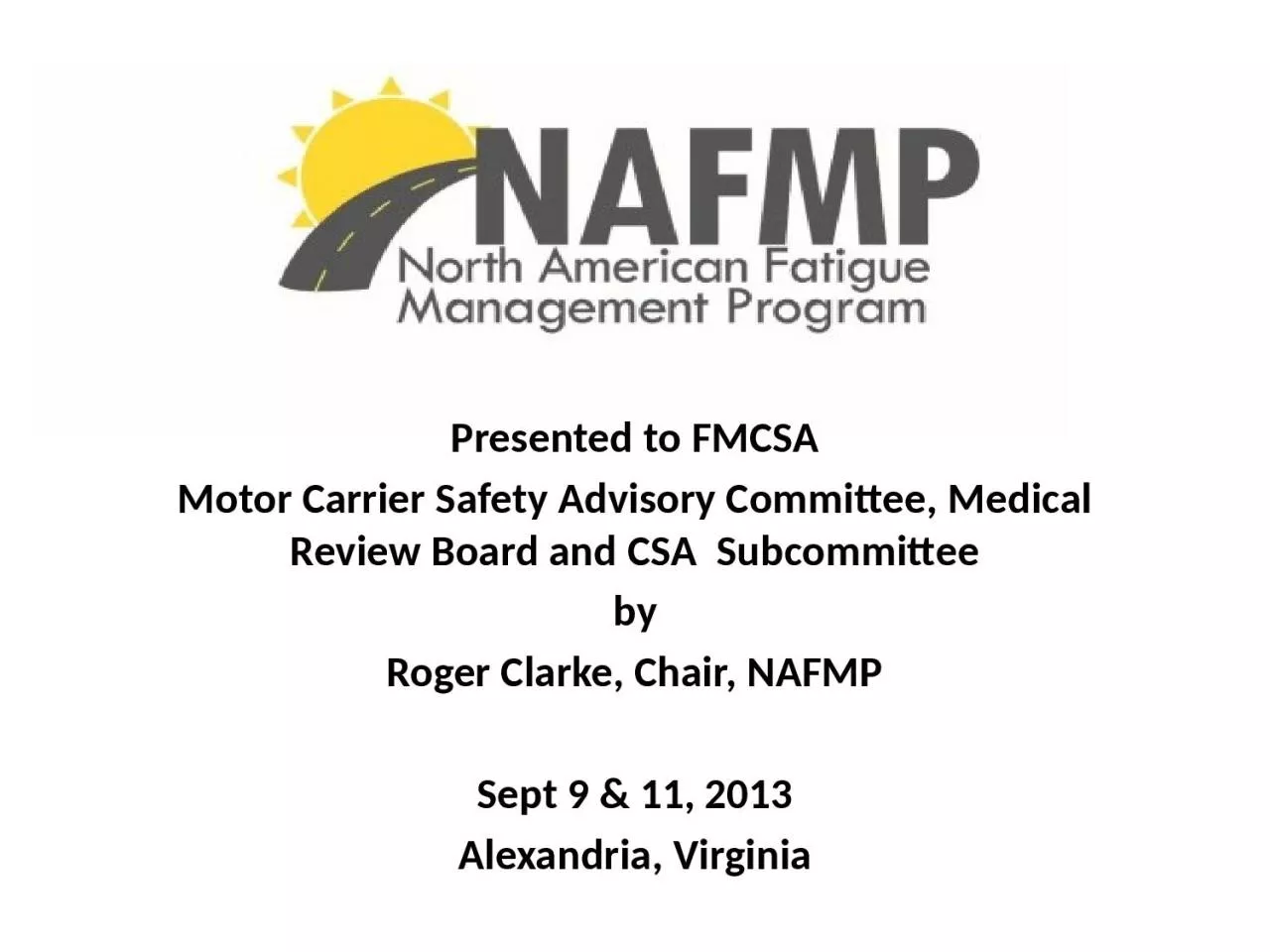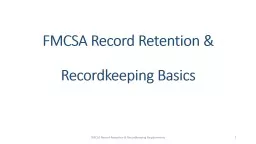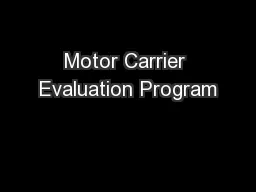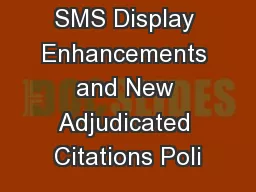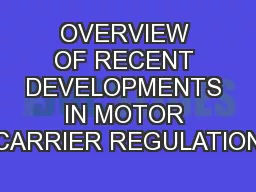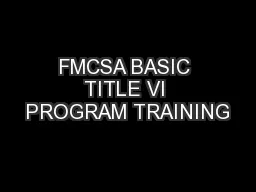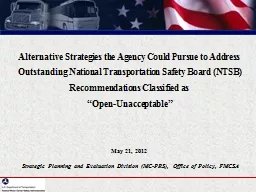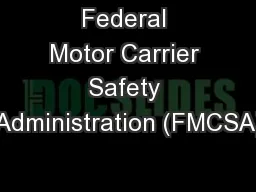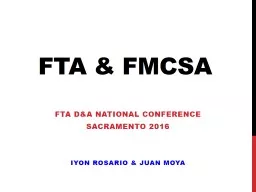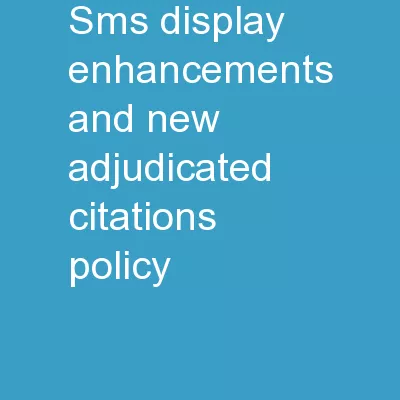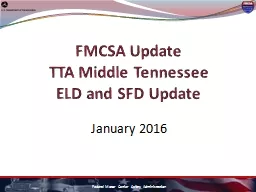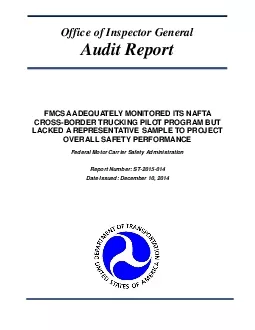PPT-Presented to FMCSA Motor Carrier Safety Advisory Committee, Medical Review Board and
Author : QuietConfidence | Published Date : 2022-08-02
Subcommittee by Roger Clarke Chair NAFMP Sept 9 amp 11 2013 Alexandria Virginia Who is NAFMP Alberta Transportation Alberta Occupational Health and Safety Alberta
Presentation Embed Code
Download Presentation
Download Presentation The PPT/PDF document "Presented to FMCSA Motor Carrier Safety..." is the property of its rightful owner. Permission is granted to download and print the materials on this website for personal, non-commercial use only, and to display it on your personal computer provided you do not modify the materials and that you retain all copyright notices contained in the materials. By downloading content from our website, you accept the terms of this agreement.
Presented to FMCSA Motor Carrier Safety Advisory Committee, Medical Review Board and: Transcript
Download Rules Of Document
"Presented to FMCSA Motor Carrier Safety Advisory Committee, Medical Review Board and"The content belongs to its owner. You may download and print it for personal use, without modification, and keep all copyright notices. By downloading, you agree to these terms.
Related Documents

